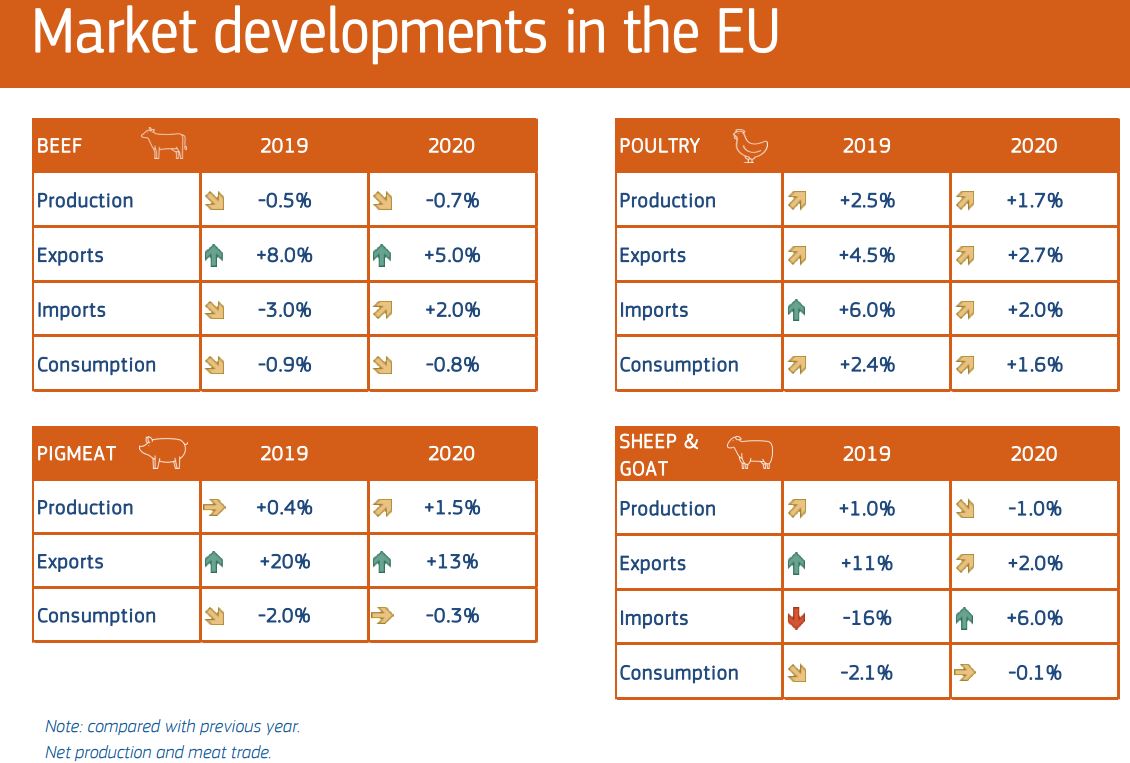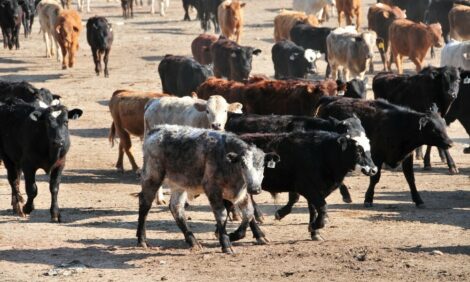



European Commission: Milk Collection Up in 2019, Beef Production Down
EU - EU milk collection should slightly grow in 2019, while gross beef production is expected to decline, according to the the European Commission.Due to the spread of African Swine Fever in China, EU pork exports should be 20% above last year by the end of 2019. Despite the drought, EU cereal production is expected to recover from last year’s low, increasing by 8% compared to 2018/19. These are among the main findings of the latest short-term outlook report for EU agricultural markets, published October 2019 by the European Commission.
As for the dairy sector, EU milk collection should slightly grow in 2019, and reach 158 million tonnes (up 0.5% compared to last year). Skimmed milk powder (SMP), exports are estimated at 950 000 tonnes (a 16% increase compared to 2018). Overall, dairy product exports are expected to increase by 5% in 2019.
.JPG)

In 2019, poultry production will continue growing in the EU, up 2.5%, thanks to good domestic and international demand. Additionally growth should continue in 2020 due to consumer trends.
Finally, overall per capita meat consumption is expected to decrease by 0.5% in 2019.
Despite the exceptionally hot and dry summer, EU cereal production should reach 312 million tonnes for 2019/20. Only maize was really affected by the drought, with production expected to go down by 4%, reaching 66.5 million tonnes. In contrast, wheat and barley production should both increase, respectively reaching 145 million tonnes (a 12.5% increase compared to 2018/19) and 61 million tonnes (a 10% rise compared to least year).
EU oilseed production is expected to reach a 7-year low in 2019/20 at 29.7 million tonnes, due to adverse weather conditions. Especially for rapeseed, where the weather conditions to difficult sowing conditions and a reduction of rapeseed planted area. EU rapeseed production is expected to decrease by 16% compared to last year.
Regarding sugar, the 2019/20 EU sugar beet area decreased by almost 5%, due to low prices. EU sugar beet production is expected to stabilise at 119 million tonnes for 2019/20, close to the levels of 2018/19. Sugar production is forecasted at 17.5 million tonnes.
While a lower harvest in Spain expected, olive oil production in 2019/20 should recover in Italy, Greece and Portugal. Total EU production should reach around 2.1 million tonnes. Thanks to the available stocks in the EU, olive oil export should reach high levels (7% above the last 5-year average).
In 2019, EU production of peaches and nectarines is estimated to increase by 4% compared to last year, reaching 4.1 million tonnes. This will lead to higher consumption and processing.
Similarly, total EU production of tomatoes should reach 16.8 million tonnes, an increase of 4% compared to 2018. The rise is mostly driven by a growth of production of tomatoes for processing, which increased by 6%. This is reflected in the trade of processed tomatoes, with EU exports expected to increase by 33% in 2019.
Spring frost in Poland has led to a large reduction of apple production, resulting in an 18% drop in production at EU level. Nonetheless, thanks to high production in the previous year, EU exports of processed apples are expected to be high for 2019 (11% above average).
Further Reading
You can view the full short-term outlook report with analysis and statistics by market by clicking here.
TheCattleSite News Desk


